中国拥有悠久的历史和灿烂的文化,节日习俗作为其重要组成部分,承载着丰富的内涵和独特的魅力。以下是关于中国节日习俗英文版的相关内容。
文章大纲如下:首先介绍中国主要的节日及其时间;其次阐述每个节日的特色习俗;接着说明这些节日习俗所蕴含的意义;最后总结中国节日习俗的重要意义。
The Main Festivals and Their Time China has many traditional festivals. The Spring Festival usually falls on the first day of the Chinese lunar calendar, which is the most important festival for family reunions. The Mid-Autumn Festival is on the 15th day of the eighth lunar month, when people enjoy mooncakes under the full moon. The Dragon Boat Festival is celebrated on the fifth day of the fifth lunar month, with dragon boat races being a highlight. And there are other festivals like the Lantern Festival, Qingming Festival and so on. The Characteristic Customs of Each Festival During the Spring Festival, people have various customs. They paste up spring couplets on their doors, which are often beautiful words expressing good wishes for the new year. Red lanterns are also hung everywhere to create a festive atmosphere. Families gather together for a big dinner, and one of the most typical dishes is the fish, which symbolizes abundance in the coming year. Children can receive red envelopes containing money from their elders as a gift. At the Mid-Autumn Festival, the main custom is eating mooncakes. Mooncakes are round pastries with different fillings, such as nuts and fruit. They represent reunion because of their round shape. People also have the habit of admiring the moon, reciting poems about the moon and sharing stories with their families. For the Dragon Boat Festival, as mentioned before, dragon boat racing is a thrilling activity. Teams of rowers race in beautifully decorated dragon-shaped boats. In addition, making zongzi, which are glutinous rice dumplings wrapped in bamboo leaves, is another important custom. Zongzi come in different shapes and flavors, such as salty and sweet ones. The Lantern Festival is held on the 15th day of the first lunar month. One of its most prominent customs is watching lanterns. Colorful and intricately designed lanterns of various shapes and sizes are lit up, creating a beautiful night scene. People also eat tangyuan, sweet glutinous rice balls, which symbolize unity. During the Qingming Festival, people pay respect to their ancestors by visiting their graves. They clean the tombstones, offer food and burn incense to show their respect and memory. It's also a time for people to go out into nature and enjoy the fresh spring scenery. The Meanings Behind the Customs These festival customs are not just simple activities. They are deeply rooted in Chinese history and culture. The Spring Festival customs reflect people's longing for a better life and their emphasis on family values. The Mid-Autumn Festival customs express people's yearning for reunion and harmony. The Dragon Boat Festival customs commemorate ancient heroes and promote team spirit. The Lantern Festival customs symbolize the hope for a bright future and the joy of life. And the Qingming Festival customs demonstrate respect for ancestors and the tradition of filial piety. The Significance of Chinese Festival Customs In conclusion, Chinese festival customs are an essential part of Chinese culture. They not only provide opportunities for people to relax and have fun but also help to preserve and pass down the traditional values and beliefs. These customs make China's festivals unique and colorful, attracting more and more attention from all over the world. They play a significant role in promoting cultural exchange and enhancing people's understanding of China's rich heritage.








